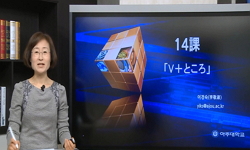일본의 선거제도 특징은 중복입후보와 동일순위 복수후보 등재 허용과 석패율제도이다. 본 연구에서는 석패율제도를 중심으로 그 정치적 효과를 실증적으로 분석하였다. 첫째, 중복입후보...
http://chineseinput.net/에서 pinyin(병음)방식으로 중국어를 변환할 수 있습니다.
변환된 중국어를 복사하여 사용하시면 됩니다.
- 中文 을 입력하시려면 zhongwen을 입력하시고 space를누르시면됩니다.
- 北京 을 입력하시려면 beijing을 입력하시고 space를 누르시면 됩니다.
일본선거제도개혁과 석패율제도의 효과: 한국에의 시사점
한글로보기https://www.riss.kr/link?id=G3791282
- 저자
-
발행기관
-
-
발행연도
2009년
-
작성언어
Korean
-
주제어
석패율 ; sekihairitsu rule ; election system ; single-seat constituencies ; Japanese politics ; prportional representation ; 중복입후보 ; 소선거구제 ; 비례대표제 ; 정당명부 ; 일본 ; 한국
-
자료형태
한국연구재단(NRF)
-
0
상세조회 -
0
다운로드
부가정보
국문 초록 (Abstract)
일본의 선거제도 특징은 중복입후보와 동일순위 복수후보 등재 허용과 석패율제도이다. 본 연구에서는 석패율제도를 중심으로 그 정치적 효과를 실증적으로 분석하였다. 첫째, 중복입후보와 석패율제도가 중진의 유력정치인들에게 유리하고, 신진 정치세력의 진입을 가로막는 장애가 된다는 비판이다. 둘째, 일본의 선거제도 개혁의 핵심은 "소선거구제의 도입"이었다. 그런데 석패율제도는 소선거구제의 효과를 제약하는 기제로 작용하고 있다고 주장된다. 셋째, 석패율제도가 군소정당의 선거운동을 활성화시키고, 비례대표 정당명부의 작성에 유권자들의 의사를 반영시키는 효과가 있다는 주장이다. 석패율에 관한 실증적인 분석의 결과 일본 각 정당은 독자적인 비례대표 전략을 가지고 있었다. 자민당은 비례대표 명부작성과 전략에 있어서, 유력한 정치인 한두명을 우선 배려하는 전략을 취하고 그 다음에 소선거에 출마한 모든 후보들은 석패율 경쟁을 시키는 전략을 취하고 있다. 민주당은 대체로 소선거구 출마자 전원을 비례대표 1위에 우선적으로 배려하여 석패율 경쟁으로 순위를 결정하는 전략을 취하고 있다. 공명당은 지역구와 비례대표 전략을 분리하여 선거에 임하고 있음을 보여주었다. 사민당은 소선거구 출마자 모두를 석패율 경쟁시키는 전략을 취하였으며, 공산당은 한 두명의 전략후보(소선거구 출마자이건, 비례대표만의 후보이건)를 공천하는 전략을 취하였다. 이러한 석패율전략은 당선가능성이 없는 지역에서도 선거운동의 촉진과 정당정치의 활성화를 위한 유인과 동기부여를 가능하게 하여, 정당정치의 지역적 기반을 정착시키고 정당활동을 강화시키는 효과를 겨냥하였다고 보여진다.
다국어 초록 (Multilingual Abstract)
The Japanese present election system is a combination of the single-seat constituency system and proportional representation. The combined election system was adopted and went into effect to replace the long-standing multi-seat medium-sized constituen...
The Japanese present election system is a combination of the single-seat constituency system and proportional representation. The combined election system was adopted and went into effect to replace the long-standing multi-seat medium-sized constituency election system, which was abolished in January 1994 by a revision of the Public Offices Election Law.
Under the system, out of 480 Members, 300 are elected from single-member districts(SMD) and remaining 180 by proportional representation in which the nation is divided into 11 electoral blocs which according to size return between six and 30 Members. Voters cast two ballots: first, one for an individual candidate in the single-seat consitituency, and second, one for a political party in the proportional representation election.
The Japanese system is unique in the way the SMD tier interacts with the PR tier. That candidates could run in both tiers, and that the losers in the SMD could be resurrected in the PR. This article argues the positive and negative aspects of the sekihairitsu rule and analysis the political effects of the sekihairitsu rule.











